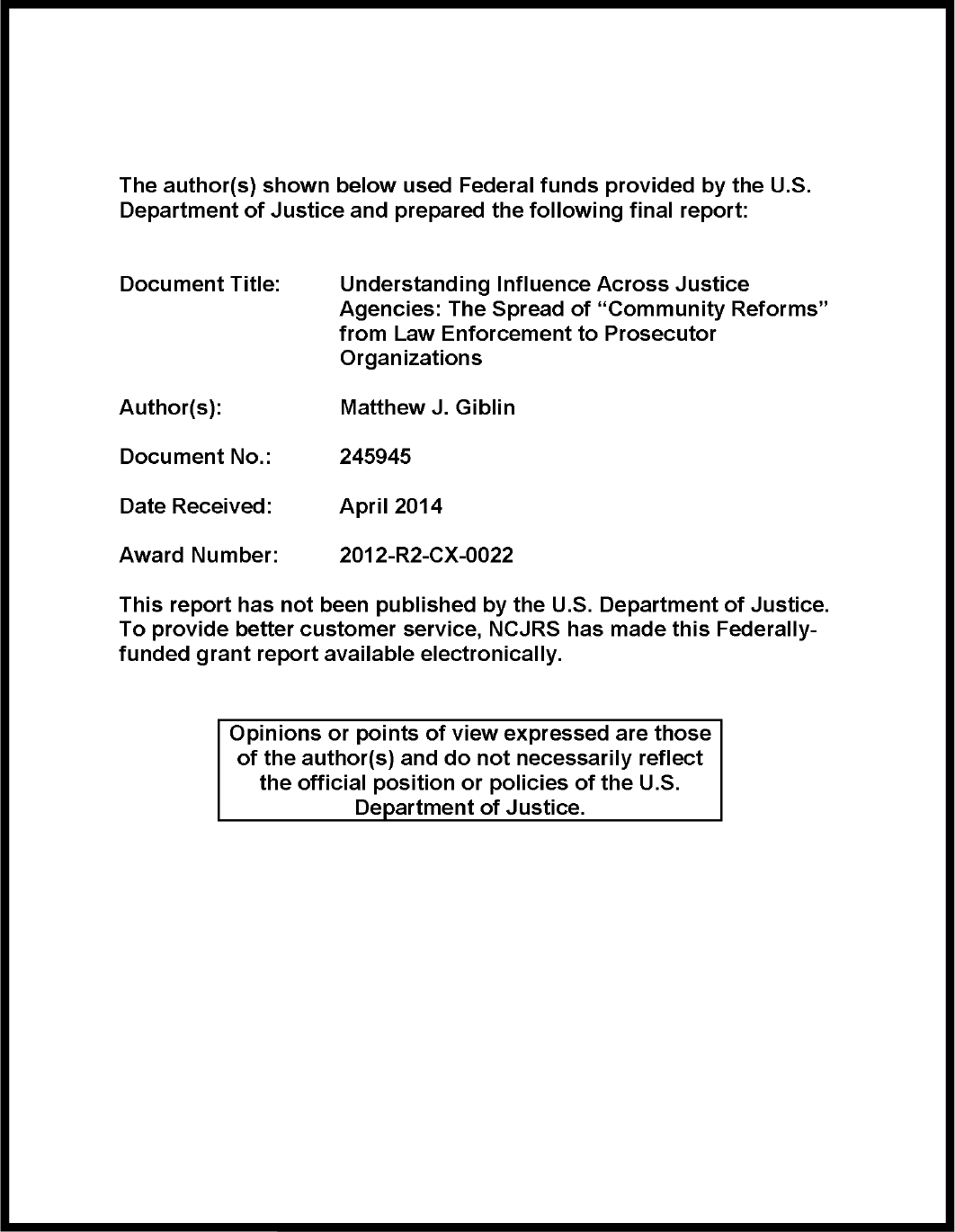
The two innovations of community policing and community prosecution are similar in their core characteristics: greater agency responsiveness to citizen input, a focus on problemsolving that uses an expanded range of options, broader measures of success, and collaborative partnerships with other public and private community organizations. Recognizing that most research has focused on one or the other community-oriented innovations in prosecutor offices and police agencies, the current study examined the interaction of these community-oriented innovations. Overall, the study found very little congruence between police and prosecutors in the adoption of community-oriented reforms. In jurisdictions where police agencies embraced community policing, prosecutors differentially implemented community prosecution. Each of these criminal justice enterprises apparently operates in its own institutional environment, responding to different organizational stimuli and leaders with varying goals, skills, orientation, and motivation. . One key finding of the study, which addressed factors operative in the development of community prosecution, is that community prosecution can be measured by using a model derived from National Prosecutors Survey data. The model includes five elements: using the community to identify crime problems, assigning prosecutors to geographic areas, using tools other than criminal prosecution, establishing relationships with other parties, and holding regular meetings with constituent groups. Another key finding is that four variables emerged as predictors in more than two models: organizational size, functional differentiation, formalization, and prosecutors’ tenure. These factors are examined in terms of their facilitation or subversion of community prosecution.
